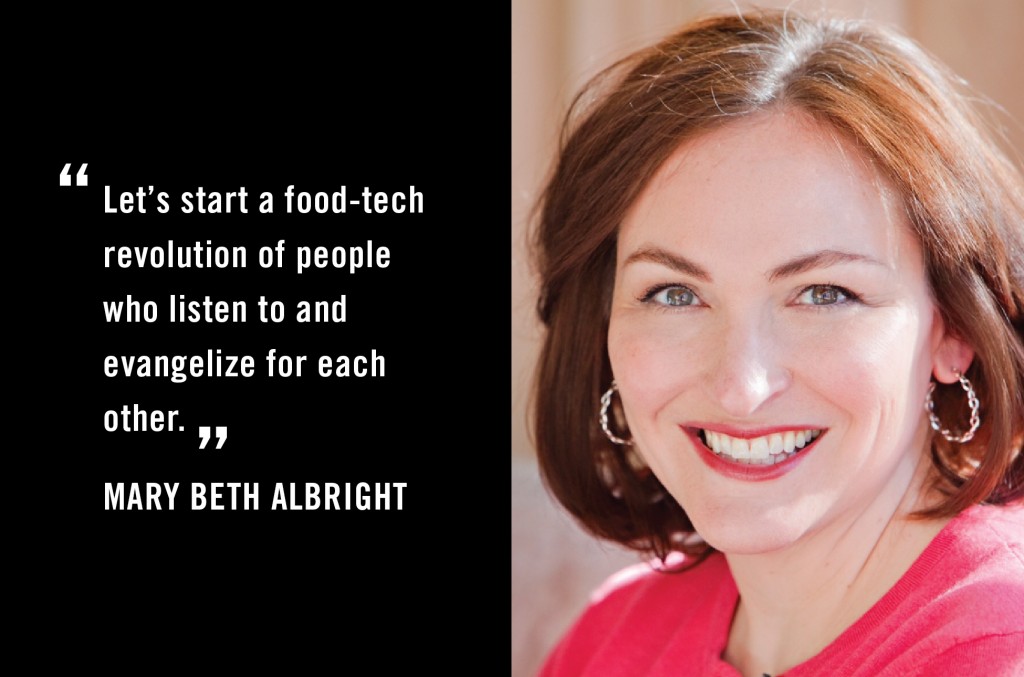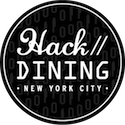Guest post by Mary Beth Albright, food attorney and food writer. The views expressed here are solely those of the author and do not reflect the views of Food+Tech Connect.
Every Independence Day, I think about what kind of a revolution I want to start. Call it a Mid-Year’s Resolution. Something about the tales of American forefathers’ creativity, courage, and conviction leads me to search for a better use of my free time than the occasional (OK, subscription to) US Weekly.
This year I’ve written a series of articles for National Geographic on the future of food and technology, and the ways mind-blowing tech innovations will change how we eat. I guess everything old is new again, because even a cursory glance at history reveals that mind-blowing tech innovations just changed how we eat—the industrial revolution, home electricity, people flocking to cities rather than agricultural communities, transportation (cars, then planes), and processed foods all seismically altered humans’ eating patterns from millennia prior.
The past century has been nothing but technology’s disruption of dining.
The most dramatically different contemporary component though, is that many of the 9 billion people who will populate the planet by 2050 won’t know how to perform the basic function that got us to 9 billion people: cook. The sourcing responsibilities that used to fall on individuals back when local gathering was the only option—because we didn’t have mass transportation to deliver food from California to Delaware—now falls increasingly on large organizations and companies: restaurants, food services, schools and companies. Technology can help organizations committed to sustainability and responsibility through methods like chef-farmer speed dating that efficiently connects restaurants with ingredients and QR-coded fish for traceability and identification, for example.
So this Independence Day, I’m thinking of a revolution in the relationships between good food advocates and technology advocates. Of course, many people involved in food tech are passionate about food. But the good food movement (including agriculture, distribution, chefs, etc,) has its own culture and body of specialized knowledge, just as technology developers do. Getting the groups to engage is vitally important to craft a sustainable dining system.
Continuing to engage food and technology groups together will encourage development of new ways to feed 9 billion well and sustainably, ways that actually improve life and don’t cause tech fatigue for people who just want to eat.
Ultimately food technology can’t serve just the elite, particularly in dining, because the food system’s issues are so much greater. Smartphones have crossed socioeconomic barriers globally, becoming a tool to reach many people who have limited access to other technologies or services of civil society.
In my professions as both a food writer and a food attorney in Washington, DC, I have one foot in the world of chefs with rare ingredients and the other in public health concerns over limited access to any ingredients. Technology folks who design high-end apps for fine dining do the same when they engage in social entrepreneurism. And some technologies have dual purpose—the $200 food scanner that shows ripeness and sweetness of produce could incite its own revolution if a scan of an area with low food-access shows that produce is definitively inferior to produce in wealthier areas.
Technology for its own sake, and avoiding technology for nostalgia’s sake, are both romantic grave-digging, and both are traps for food advocates and tech advocates. Let’s start a food-tech revolution of people who listen to and evangelize for each other. In creating food technology that is ever more relevant to the everyday lives of the increasing number of people who eat but don’t cook, the planet can’t afford to be dogmatic about food.
Hacking Dining is online conversation exploring how we might use technology and design to hack a better future for dining. Join the conversation between June 2-30, and share your ideas in the comments, on Twitter using #hackdining, Facebook, LinkedIn or Tumblr.
________________
 Mary Beth Albright is a food attorney and food writer who has held positions at the US Surgeon General’s Office, at the law firm of Williams & Connolly, and as a restaurant critic. Mary Beth has created several food literacy programs and is a Food Network alum who is a regular contributor on radio and television. Her blog, hosted by National Geographic, focuses on food culture, technology, and politics in our rapidly advancing world and her boutique firm Albright Law provides legal and communication services for food-related clients.
Mary Beth Albright is a food attorney and food writer who has held positions at the US Surgeon General’s Office, at the law firm of Williams & Connolly, and as a restaurant critic. Mary Beth has created several food literacy programs and is a Food Network alum who is a regular contributor on radio and television. Her blog, hosted by National Geographic, focuses on food culture, technology, and politics in our rapidly advancing world and her boutique firm Albright Law provides legal and communication services for food-related clients.




